TAPAS and other Spanish plates to share


TAPAS and other Spanish plates to share
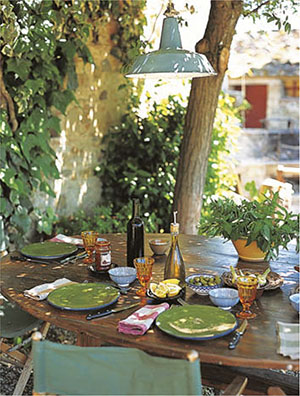
 Designers
Designers Toni Kay and Paul Stradling
Editor Delphine Lawrance
Production Mai-Ling Collyer
Art Director Leslie Harrington
Editorial Director Julia Charles
Publisher Cindy Richards Originally published in the UK and the US in 2010. Revised edition first published in 2014. This edition published in 2019 by Ryland Peters & Small 2021 Jockeys Fields London WC1R 4BW and Ryland Peters & Small Inc. 341 E 116th St New York NY 10029 www.rylandpeters.com 10 9 8 7 6 5 4 3 2 1 Text Julz Beresford, Maxine Clark, Ross Dobson, Clare Ferguson, Jennie Shapter, Linda Tubby and Ryland Peters & Small 2010, 2014, 2019 Design and photography Ryland Peters & Small 2010, 2014, 2019 ISBN: 978-1-78879-077-2 E-ISBN: 978-1-78879-393-3 The authors moral rights have been asserted. All rights reserved. No part of this publication may be reproduced, stored in a retrieval system or transmitted in any form or by any means, electronic, mechanical, photocopying or otherwise, without the prior permission of the publisher.
A CIP record for this book is available from the British Library. US Library of Congress cataloging-in-publication has been applied for. Printed and bound in China contents 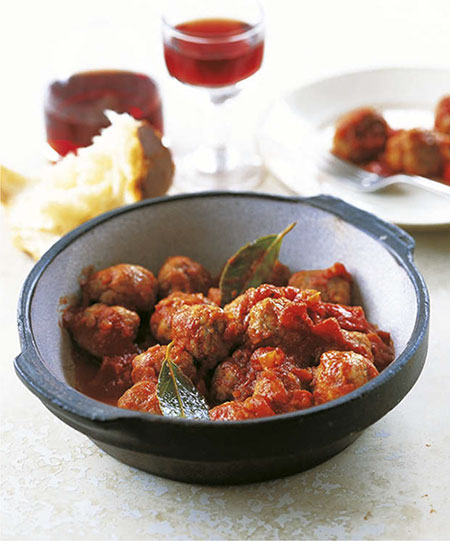
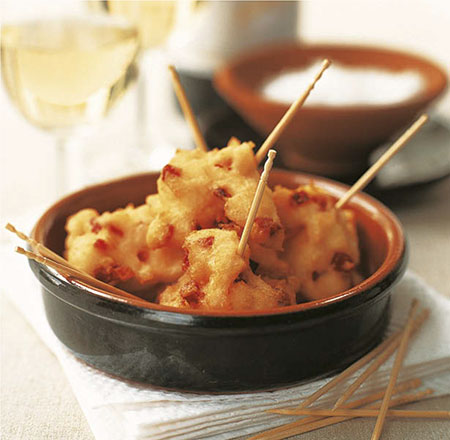

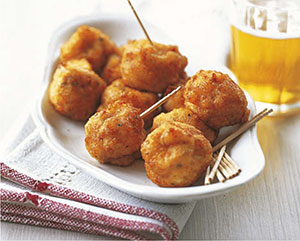

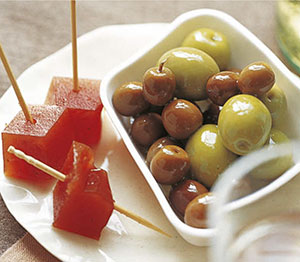
 The word tapas stems from the Spanish verb tapar, meaning to cover. Legend has it that the tapas tradition began when King Alfonso X of Castile recovered from an illness by drinking wine alongside small dishes in-between meals. He then made it illegal for taverns to serve wine to customers unless it was accompanied by a small snack or tapa. The word became a kind of loophole in the law to allow drinkers to consume alcohol.
The word tapas stems from the Spanish verb tapar, meaning to cover. Legend has it that the tapas tradition began when King Alfonso X of Castile recovered from an illness by drinking wine alongside small dishes in-between meals. He then made it illegal for taverns to serve wine to customers unless it was accompanied by a small snack or tapa. The word became a kind of loophole in the law to allow drinkers to consume alcohol.
Tapas have evolved in Spain by incorporating ingredients and influences from several different countries. The invasion of the North African Moors in the 8th century brought almonds, citrus fruits and fragrant spices. The influence of their presence remains today, especially in Andalusia. The discovery of the New World brought tomatoes, sweet and chilli peppers, corn, beans and potatoes. These were easy to grow thanks to Spain's temperate climate. Tapas now enjoy worldwide appeal as they are a highly sociable way to eat, making them the perfect choice for sharing.
The mouth-watering recipes included in this book are designed to be combined and many can be made ahead. Nearly all of the required ingredients are easily sourced, but should you have any difficulties, turn to the handy directory of suppliers on page . Mix and match the dishes as you please to create a meat-, seafood- or vegetable-orientated menu. 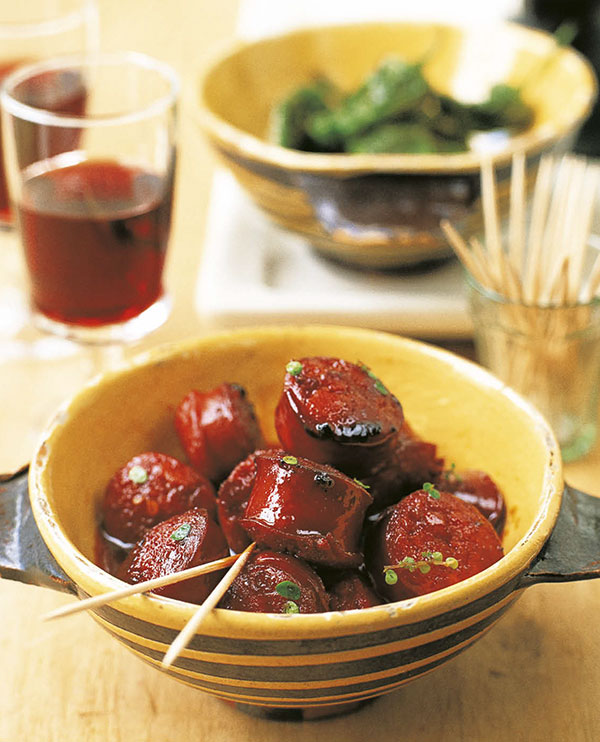
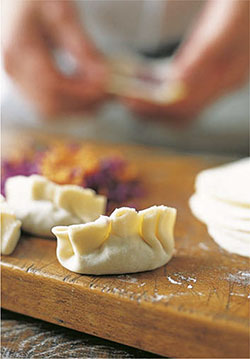
 chicken with garlic pollo al ajillo This flavoursome dish finds its way onto almost every tapas menu in Spain and varies only slightly. Its so common, yet so simple to make. 8 chicken wings 1 teaspoon oak-smoked sweet Spanish paprika 1 tablespoon lemon juice 2 tablespoons olive oil 6 garlic cloves, coarsely crushed 150 ml/ cup Brandy de Jerez sea salt and freshly ground black pepper SERVES 4 Put the chicken wings in a non-reactive bowl, then rub the paprika evenly over the skin. 8 chicken wings 1 teaspoon oak-smoked sweet Spanish paprika 1 tablespoon lemon juice 2 tablespoons olive oil 6 garlic cloves, coarsely crushed 150 ml/ cup Brandy de Jerez sea salt and freshly ground black pepper SERVES 4 Put the chicken wings in a non-reactive bowl, then rub the paprika evenly over the skin.
chicken with garlic pollo al ajillo This flavoursome dish finds its way onto almost every tapas menu in Spain and varies only slightly. Its so common, yet so simple to make. 8 chicken wings 1 teaspoon oak-smoked sweet Spanish paprika 1 tablespoon lemon juice 2 tablespoons olive oil 6 garlic cloves, coarsely crushed 150 ml/ cup Brandy de Jerez sea salt and freshly ground black pepper SERVES 4 Put the chicken wings in a non-reactive bowl, then rub the paprika evenly over the skin. 8 chicken wings 1 teaspoon oak-smoked sweet Spanish paprika 1 tablespoon lemon juice 2 tablespoons olive oil 6 garlic cloves, coarsely crushed 150 ml/ cup Brandy de Jerez sea salt and freshly ground black pepper SERVES 4 Put the chicken wings in a non-reactive bowl, then rub the paprika evenly over the skin.
Add the lemon juice, cover and let marinate in the refrigerator for 2 hours. Heat the oil in a heavy-based frying pan/skillet until smoking, add the chicken and brown on all sides. Reduce the heat, add the garlic and cook for a further 2 minutes. Add the brandy, tilt the pan/skillet to catch the flame and burn off the alcohol until the flames subside. Cover with a lid and simmer for 10 minutes.  catalan chickpea salad ensalada catalana de garbanzos This delicious, warm salad relies on just a handful of ingredients.
catalan chickpea salad ensalada catalana de garbanzos This delicious, warm salad relies on just a handful of ingredients.  catalan chickpea salad ensalada catalana de garbanzos This delicious, warm salad relies on just a handful of ingredients.
catalan chickpea salad ensalada catalana de garbanzos This delicious, warm salad relies on just a handful of ingredients.
With such a wonderful combination of flavours, you would never guess that it has a cooking time of just five minutes. You can forgo the pine nuts, but they do add a lovely bite to this salad. 3 tablespoons extra virgin olive oil 1 red onion, sliced 2 garlic cloves, chopped 200 g/8 oz. chorizo, sliced 2 bay leaves, bruised 2 tablespoons pine nuts, toasted in a dry frying pan/skillet (optional) 400 g/2 cups canned chickpeas, drained, reserving 2 tablespoons of their liquid coarsely ground black pepper 1 small tomato, finely chopped, to serve SERVES 4 Heat the oil in a frying pan/skillet, add the onion, garlic, chorizo and bay leaves and saut over gentle heat for 5 minutes or until softened but not browned. Stir in the toasted pine nuts, if using, and chickpeas with their liquid. Heat until the flavours are combined, mashing a little with a fork.
Sprinkle with pepper and the chopped tomato and serve hot, warm or cool, but never chilled. 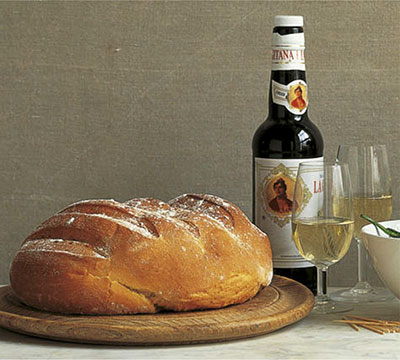
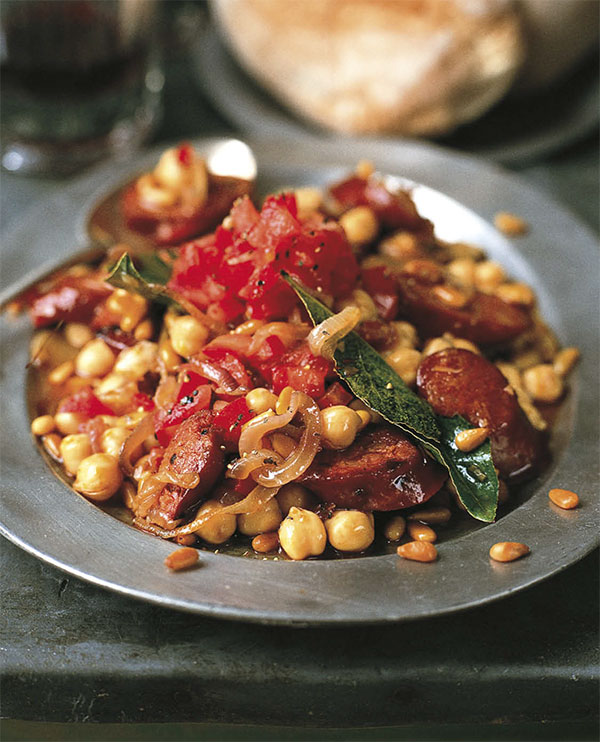


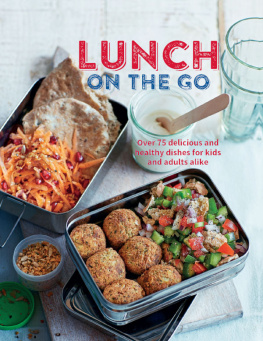

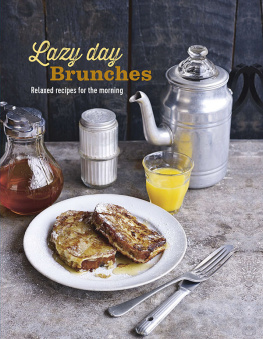
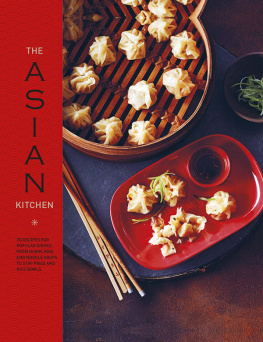
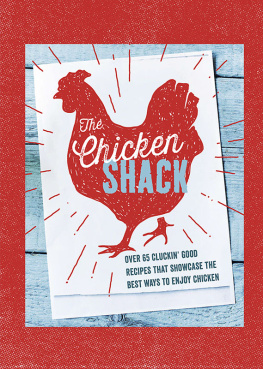

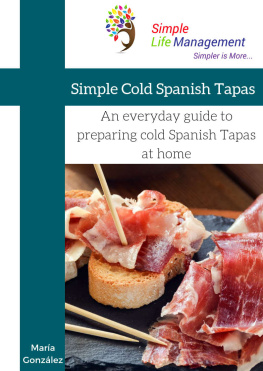


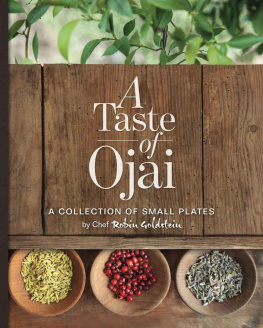



 TAPAS and other Spanish plates to share
TAPAS and other Spanish plates to share 
 Designers Toni Kay and Paul Stradling Editor Delphine Lawrance Production Mai-Ling Collyer Art Director Leslie Harrington Editorial Director Julia Charles Publisher Cindy Richards Originally published in the UK and the US in 2010. Revised edition first published in 2014. This edition published in 2019 by Ryland Peters & Small 2021 Jockeys Fields London WC1R 4BW and Ryland Peters & Small Inc. 341 E 116th St New York NY 10029 www.rylandpeters.com 10 9 8 7 6 5 4 3 2 1 Text Julz Beresford, Maxine Clark, Ross Dobson, Clare Ferguson, Jennie Shapter, Linda Tubby and Ryland Peters & Small 2010, 2014, 2019 Design and photography Ryland Peters & Small 2010, 2014, 2019 ISBN: 978-1-78879-077-2 E-ISBN: 978-1-78879-393-3 The authors moral rights have been asserted. All rights reserved. No part of this publication may be reproduced, stored in a retrieval system or transmitted in any form or by any means, electronic, mechanical, photocopying or otherwise, without the prior permission of the publisher.
Designers Toni Kay and Paul Stradling Editor Delphine Lawrance Production Mai-Ling Collyer Art Director Leslie Harrington Editorial Director Julia Charles Publisher Cindy Richards Originally published in the UK and the US in 2010. Revised edition first published in 2014. This edition published in 2019 by Ryland Peters & Small 2021 Jockeys Fields London WC1R 4BW and Ryland Peters & Small Inc. 341 E 116th St New York NY 10029 www.rylandpeters.com 10 9 8 7 6 5 4 3 2 1 Text Julz Beresford, Maxine Clark, Ross Dobson, Clare Ferguson, Jennie Shapter, Linda Tubby and Ryland Peters & Small 2010, 2014, 2019 Design and photography Ryland Peters & Small 2010, 2014, 2019 ISBN: 978-1-78879-077-2 E-ISBN: 978-1-78879-393-3 The authors moral rights have been asserted. All rights reserved. No part of this publication may be reproduced, stored in a retrieval system or transmitted in any form or by any means, electronic, mechanical, photocopying or otherwise, without the prior permission of the publisher. 





 The word tapas stems from the Spanish verb tapar, meaning to cover. Legend has it that the tapas tradition began when King Alfonso X of Castile recovered from an illness by drinking wine alongside small dishes in-between meals. He then made it illegal for taverns to serve wine to customers unless it was accompanied by a small snack or tapa. The word became a kind of loophole in the law to allow drinkers to consume alcohol.
The word tapas stems from the Spanish verb tapar, meaning to cover. Legend has it that the tapas tradition began when King Alfonso X of Castile recovered from an illness by drinking wine alongside small dishes in-between meals. He then made it illegal for taverns to serve wine to customers unless it was accompanied by a small snack or tapa. The word became a kind of loophole in the law to allow drinkers to consume alcohol.

 chicken with garlic pollo al ajillo This flavoursome dish finds its way onto almost every tapas menu in Spain and varies only slightly. Its so common, yet so simple to make. 8 chicken wings 1 teaspoon oak-smoked sweet Spanish paprika 1 tablespoon lemon juice 2 tablespoons olive oil 6 garlic cloves, coarsely crushed 150 ml/ cup Brandy de Jerez sea salt and freshly ground black pepper SERVES 4 Put the chicken wings in a non-reactive bowl, then rub the paprika evenly over the skin. 8 chicken wings 1 teaspoon oak-smoked sweet Spanish paprika 1 tablespoon lemon juice 2 tablespoons olive oil 6 garlic cloves, coarsely crushed 150 ml/ cup Brandy de Jerez sea salt and freshly ground black pepper SERVES 4 Put the chicken wings in a non-reactive bowl, then rub the paprika evenly over the skin.
chicken with garlic pollo al ajillo This flavoursome dish finds its way onto almost every tapas menu in Spain and varies only slightly. Its so common, yet so simple to make. 8 chicken wings 1 teaspoon oak-smoked sweet Spanish paprika 1 tablespoon lemon juice 2 tablespoons olive oil 6 garlic cloves, coarsely crushed 150 ml/ cup Brandy de Jerez sea salt and freshly ground black pepper SERVES 4 Put the chicken wings in a non-reactive bowl, then rub the paprika evenly over the skin. 8 chicken wings 1 teaspoon oak-smoked sweet Spanish paprika 1 tablespoon lemon juice 2 tablespoons olive oil 6 garlic cloves, coarsely crushed 150 ml/ cup Brandy de Jerez sea salt and freshly ground black pepper SERVES 4 Put the chicken wings in a non-reactive bowl, then rub the paprika evenly over the skin. catalan chickpea salad ensalada catalana de garbanzos This delicious, warm salad relies on just a handful of ingredients.
catalan chickpea salad ensalada catalana de garbanzos This delicious, warm salad relies on just a handful of ingredients. 
